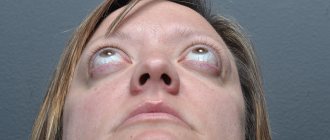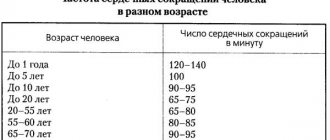Author, editor and medical expert – Klimovich Elina Valerievna.
Last updated date: 11/17/2021
Quantity 182.
Average reading time: 14 minutes.
Nasal congestion, or, as doctors say, nasal obstruction, is the most common complaint of otolaryngologist patients. Difficulty breathing not only causes discomfort, but can also provoke complications that worsen health and quality of life.
Up to contents
Causes of nasal congestion
Acute nasal obstruction can be caused by a variety of reasons: physiological and pathological.
- Physiological, in principle, are harmless; normal breathing is restored on its own1.
Swelling of the mucous membrane may occur:
- when there is a sudden change in air temperature, for example, in winter when entering a warm room from the street;
- when the air in the room is excessively dry, when the mucous membrane dries out;
- during physical activity, when all superficial vessels dilate;
- at elevated body temperature due to the rapid evaporation of moisture from the surface of the mucous membrane and its drying.
- Pathological. Runny nose and nasal congestion in adults and children are most often associated with acute respiratory diseases1. In second place is allergic rhinitis, which occurs during sudden contact with an allergen, followed by traumatic rhinitis associated with inhalation of polluted air1.
In fact, any type of acute rhinitis, accompanied by swelling to one degree or another, leads to nasal congestion and snot. The situation is more complicated with persistent difficulty breathing.
Chronic nasal obstruction may be associated with the following pathologies3:
- Developmental defects - most often they are diagnosed in children.
- Chronic inflammatory diseases (rhinitis, sinusitis and adenoiditis), accompanied by proliferation (hypertrophy) or thinning (atrophy) of the mucous membrane, including:
- allergic rhinitis caused by constant or seasonal contact with an allergen (most often in adults)3;
- vasomotor – caused by a disorder of the nervous regulation of blood vessel tone;
- toxic – associated with contact with the mucous membrane of chemical irritants;
- medicinal – occurs with prolonged use of vasoconstrictor drops.
- Injuries and curvatures of the nasal septum (more common in adults).
- Foreign bodies (often found in children).
- Hypertrophy of the nasopharyngeal tonsils - adenoids (mainly childhood pathology).
- Various neoplasms: tumors, polyps.
- Hormonal imbalances, such as hypothyroidism, or decreased thyroid function leading to general swelling3.
Up to contents
Kinds
The classification of I. B. Soldatov (1990) is used. According to it, the following types of chronic rhinitis are distinguished:
- catarrhal - manifested by intermittent or mild swelling, redness of the mucous membrane, chronic runny nose; when a decongestant is applied to the mucous membrane, the swelling disappears;
- hypertrophic – can be limited or diffuse, associated with thickening of the mucosa and narrowing of the lumen of the nasal passages; decongestant test is often negative;
- atrophic - can also be limited or diffuse, associated with thinning of the mucous membrane, the disappearance of glands and olfactory receptors in its thickness, fragility of blood capillaries; severe form of atrophic rhinitis - fetid runny nose, or ozena;
- vasomotor – allergic or neurovegetative, caused by a violation of vascular regulation.
Symptoms
A variety of reasons leaves an imprint on the clinical picture of disorders:
- Snot.
Most colds of a viral nature are accompanied by difficulty breathing from the very beginning of their development. It is relieved with the appearance of snot and by the end of the cold it is restored by itself.
- Sneezing.
Sneezing, secretion of large amounts of clear foamy mucus, accompanying redness of the eyes and watery eyes are signs of allergic rhinitis. Moreover, allergy sufferers note a seasonal deterioration in their condition during the flowering of plants, cleaning the house, and upon contact with pets or household chemicals.
- Nasal voice.
The nose and its paranasal sinuses serve as a resonator. When they don't work, the voice takes on a nasal tone.
- Nosebleeds should alert you to an atrophic process, tumors or polyps.
- Dry mouth and sore throat.
This is a natural result of breathing through the mouth and drying out the mucous membranes of the mouth and throat.
- Bad breath.
Microbes actively multiply on the dry mucous membrane of the gums, cheeks and tongue, which can cause halitosis.
- Hearing loss.
This is the result of swelling of the Eustachian tube, which connects the nasopharynx and middle ear.
- Regardless of the cause, prolonged difficulty breathing leads to oxygen deficiency in the brain and the appearance of symptoms of hypoxia:
- insomnia at night and drowsiness during the day,
- frequent headaches,
- increased fatigue and reduced exercise tolerance,
- problems with concentration and memory impairment.
Up to contents
Prevention
The medical product for nasal congestion Aqualor is excellent for preventing sinusitis and rhinitis. Experts recommend using it during the flu and cold season to sanitize the nasal cavity. After being in crowded places, rinse your and your child’s nose. This way you will get rid of germs that have entered your mucous membrane. Strong immunity is a reliable barrier against harmful microorganisms. Make it a rule to do morning exercises, ventilate the room, and eat right. Get enough fiber and vitamins from food. Dress according to the weather, try not to get too cold. Only an ENT doctor can determine how to remove nasal congestion. At the first signs of illness, go to see an otolaryngologist. Do not self-medicate; you can make the situation worse by taking medications without knowing the cause of the disease.
Nose stuffy without runny nose
If there is nasal congestion without a runny nose, depending on the nature of the obstruction, the following diseases can be suspected2,3:
- With constant nasal congestion on both sides:
- adenoiditis,
- adenoids,
- polyposis,
- hypertrophic rhinitis.
- For chronic unilateral:
- deviated septum,
- foreign body
- tumor or polyp.
- If it lays on one side or the other:
- vasomotor,
- atrophic rhinitis.
- If it only starts at night:
- allergic rhinitis to feathers (down) and dust mites,
- sinusitis,
- adenoids (adenoiditis),
- insufficient air humidity,
- chronic rhinitis,
- deviated nasal septum.
- With drug-induced rhinitis, bilateral nasal congestion is so strong that it forces patients to use vasoconstrictor drops again and again, without thinking about the consequences of such “treatment”3.
Up to contents
general characteristics
Regardless of the cause, nasal congestion often develops gradually: a person notices difficulty breathing through the nose, and a subjective feeling of lack of air appears.
The condition is accompanied by discomfort in the forehead and bridge of the nose, dryness of the nasal epithelium. With severe difficulty in the passage of air flow, patients breathe through a slightly open mouth, and their sense of smell decreases. There is often a combination of congestion with sleep disturbances - in a horizontal position the symptoms intensify, so people have to sleep half-sitting, leaning on high pillows. A few hours after the onset of nasal breathing disorders, other symptoms often appear - mucous discharge, itching, sneezing. Sometimes breathing is disturbed only on one side, and when lying on one side, a feeling of stuffiness in the nostril located below is typical. With a chronically stuffy nose, the body does not receive enough oxygen, which results in persistent headaches. If difficulty in nasal breathing persists for 3-4 days, problems with your general condition increase, and insomnia bothers you, you should consult a specialist.
Nasal congestion in children
Chronic nasal obstruction in a child requires special attention from parents, since it can lead to global consequences - impaired growth and development of the baby3:
- Nasal obstruction makes eating difficult. The child refuses to eat, does not gain weight well, and lags behind his peers in physical development.
- Chronic oxygen starvation of the brain leads to slower mental development and educational lag.
- Constant discomfort causes bad mood, whims and tears.
- Mouth breathing disrupts the development of the facial skeleton. The so-called “adenoid” face is formed: a dome-shaped upper palate, an incorrect bite, a half-open mouth, an apathetic facial expression and a smile.
- Disruption of air movement through the upper respiratory tract provokes snoring and the development of sleep apnea syndrome and enuresis.
- Impaired ventilation of the lungs can lead to the formation of cor pulmonale and the development of heart failure.
- Infants may develop respiratory muscle fatigue syndrome, leading to acute respiratory failure3.
Up to contents
Nasal congestion during pregnancy
Pregnancy-related nasal breathing problems are primarily caused by hormonal changes. Symptoms of obstruction occur closer to the second half of the term, although some women note their appearance in the first months of pregnancy:
- A change in the ratio between the sex hormones estrogen and progesterone in favor of the latter leads to a change in the tone of smooth muscle fibers. This is necessary primarily to relax the uterus and maintain pregnancy. Dilatation of the nasal veins is a byproduct of the action of hormones, leading to swelling of the mucous membrane and nasal obstruction.
- During pregnancy, the volume of circulating blood increases sharply and there is a risk of edema, including in the nasal area.
- The natural decrease in immunity during pregnancy contributes to colds, accompanied by a runny nose.
In addition, factors independent of pregnancy cannot be discounted.
Up to contents
Diagnostics
To get rid of a runny nose and nasal congestion, you need to establish their cause, otherwise the treatment will not bring results, or the results will be short-lived. First of all, you need to see a doctor, in this case an otolaryngologist.
In most cases, the diagnosis becomes obvious immediately after examining the nasal cavity using a special instrument - anterior and posterior rhinoscopy.
Sometimes additional research is required:
- endoscopy is the gold standard for diagnosing ENT diseases in children and adults;
- radiography of the nasopharynx in a lateral projection (allows you to differentiate adenoids from other diseases of the nasopharynx in young patients);
- computed tomography of the paranasal sinuses (used to diagnose neoplasms);
- rhinofluometry is a method that allows you to quantify the degree of nasal breathing impairment;
- polysomnography (indicated for diagnosing sleep apnea);
- allergy tests (to determine the allergen for allergic rhinitis);
- consultations with other specialists, for example: endocrinologist, allergist, surgeon.
After making a final diagnosis, the doctor will prescribe the necessary treatment.
Up to contents
Which doctor should I contact?
An ENT specialist or an otorhinolaryngologist will help you cope with the problem; you can make an appointment with him on the website. The doctor will conduct an examination, prescribe examinations, and tests. Based on the results obtained, treatment will be prescribed. All activities take place under the strict supervision of a doctor. You can make an appointment with a specialist by phone (for English-speaking patients), (the lines are open 24 hours a day) or using the form on the website.
JSC "Medicine" (clinic of academician Roitberg) is located in the center of Moscow, 2nd Tverskoy-Yamskaya lane 10 (metro stations "Mayakovskaya", "Tverskaya", "Belorusskaya", "Novoslobodskaya").
Treatment of nasal congestion
Depending on the reasons, it can be 2,3:
- surgical;
- conservative (medicinal);
- combined - combining surgery and drug therapy, for example, endoscopic surgery and the use of drugs.
Surgery
Surgical correction of the airway is required in the following cases3:
- violation of the anatomical shape or size, for example, with some congenital anomalies or curvature of the nasal septum,
- adenoids,
- hypertrophic variant of chronic runny nose and proliferation of nasal turbinates,
- neoplasms (tumors and polyps),
- foreign bodies.
No medications for nasal congestion will help solve the problem if it lies in the above diseases. Long-term use of vasoconstrictor drops will cause addiction and the development of drug-induced rhinitis, which will aggravate the situation.
Today, most operations are performed using endoscopic technology, so they are low-traumatic and do not require long-term rehabilitation.
The doctor will prescribe drug therapy after surgical treatment - it will help eliminate postoperative discomfort and contribute to the rapid restoration of nasal function.
Conservative treatment
Conservative treatment begins with humidifying the air in the room and wet cleaning aimed at reducing the concentration of dust and allergens.
The choice of drug therapy depends on the cause of the disorder:
- Rinsing the nasal cavity with saline solution is indicated for rhinitis. The temperature of the solution should be close to body temperature2.
Saline solution helps to wash away accumulated mucus containing microbes, allergens and chemical irritants, moisturize the mucous membrane and reduce its swelling.
- A special place in the list of remedies for nasal congestion is occupied by nasal drops with a vasoconstrictor effect - decongestants3 .
The mechanism of their action is based on the stimulation of special receptors located in the muscle wall of blood vessels3. By acting on receptors, decongestants cause vasoconstriction, reduce blood flow to the nasal mucosa and thereby reduce its swelling3. These drugs include the TIZIN® line.
For adults and children over 6 years of age, the following preparations have been created: TIZIN® Classic based on xylometazoline and TIZIN® Expert, which also contains hyaluronic acid4.
Xylometazoline causes a vasoconstrictor effect, reduces swelling and makes breathing easier within 5-10 minutes4.
Hyaluronic acid moisturizes the mucous membrane and helps reduce dry nose4.
The silver-containing SILVER TURBO spiral, which is equipped with a spray bottle of TIZIN® preparations, does not allow bacteria to penetrate inside the bottle. Thanks to this, the medicinal solution remains sterile throughout the entire period of use.
- Antiallergic drugs.
For allergic rhinitis, TIZIN® Alergy is used based on levocabastine hydrochloride, which has an antihistamine effect5. The spray form allows you to irrigate a large surface of the epithelial layer, which ensures action within 5 minutes5. The effect of the drug can last up to 12 hours5.
- Local antibiotics, if necessary, can be used only as prescribed by a doctor.
Important! Difficulty in nasal breathing in children always requires seeing a doctor. It is dangerous to treat nasal congestion at home for a long time without consulting a specialist, since complications often develop in children.
Up to contents
Naphthyzin
A fast-acting vasoconstrictor for infectious rhinitis, hay fever, and sinusitis accompanied by debt. The drops almost instantly reduce the lumen of the capillaries; after just a minute of their use, breathing becomes freer. The effect lasts up to 6–8 hours. It is necessary to use Naphthyzin only when there is severe congestion, for example, at night. The course is no more than 5 days. Long-term use can cause addiction and decrease the sensitivity of blood vessels to the active substance. Naphthyzin should be used especially carefully in children. To eliminate a runny nose, it is allowed from 1 year.











